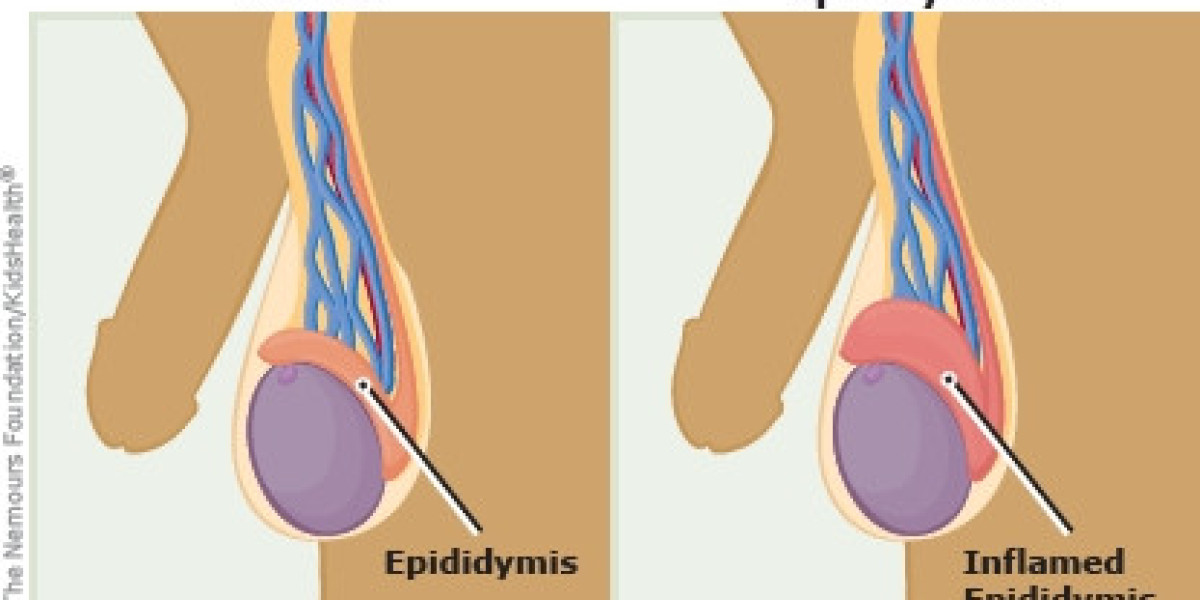Epididymitis is the inflammation of the epididymis—a coiled tube at the back of the testicles that stores and transports sperm. When this tube becomes irritated or infected, it can cause pain, swelling, and discomfort in the scrotum. Although it's not a life-threatening condition, epididymitis can affect your daily life and well-being if left untreated.
It can happen to men of all ages, but it’s especially common in those between 19 and 35 years old. The good news? With the right diagnosis and timely treatment, most cases resolve without long-term complications.
What Causes Epididymitis?
Epididymitis doesn't just show up out of nowhere. Understanding what triggers it can help you prevent it in the future. Here's a look at the most common causes:
1. Sexually Transmitted Infections (STIs)
In sexually active young men, STIs like chlamydia and gonorrhea are often the leading causes of epididymitis. The bacteria travel through the urethra and into the reproductive tract, causing inflammation.
2. Urinary Tract Infections (UTIs)
Older men and boys who aren’t sexually active might develop epididymitis due to urinary tract infections. Bacteria from the bladder or kidneys can backflow into the epididymis.
3. Prostate Problems
An inflamed or infected prostate gland (prostatitis) may cause infection to spread to the epididymis.
4. Physical Injury or Strain
Heavy lifting, intense workouts, or trauma to the groin area can sometimes cause non-infectious inflammation.
5. Medical Procedures
Certain procedures—like catheter use or prostate surgery—may introduce bacteria or irritate the reproductive system, leading to epididymitis.
Signs and Symptoms You Shouldn't Ignore
Epididymitis often begins suddenly, and symptoms may escalate quickly if not treated. Here’s what to look for:
Scrotal Pain (usually on one side)
Swelling and Tenderness of the testicle
Redness or Warmth in the scrotal area
Frequent or Painful Urination
Discharge from the penis (if STI-related)
Fever and Chills
Pain During Ejaculation or Sex
Blood in the Semen
If you’re experiencing any of these symptoms, don’t wait. Getting diagnosed early can help avoid complications like chronic pain or fertility issues.
How Epididymitis Is Diagnosed
Doctors usually start with a physical exam to check for swelling, redness, and tenderness in the testicles. They may also order:
Urine Tests – to detect infections
STI Screenings – to check for chlamydia, gonorrhea, or other infections
Ultrasound – to rule out testicular torsion, a serious emergency with similar symptoms
These tests are simple and help pinpoint the exact cause of your discomfort.
Effective Treatment Options for Epididymitis
The treatment for epididymitis depends on its root cause. Here’s what most men can expect:
1. Antibiotics
If the condition is caused by bacteria, a course of antibiotics is usually prescribed for 10–14 days. It’s important to complete the full course—even if symptoms improve quickly.
2. Pain Relief
Over-the-counter medications like ibuprofen or acetaminophen can help reduce pain and inflammation.
3. Supportive Care
Simple at-home care can make a big difference:
Rest in bed for a few days
Apply cold packs to reduce swelling
Elevate the scrotum with snug-fitting underwear
Avoid heavy lifting and sexual activity until fully healed
4. Follow-Up Care
After finishing antibiotics, your doctor might recommend a check-up to ensure the infection is completely gone. Ignoring follow-up care can lead to recurrence or complications.
Natural and Herbal Support
Some men explore natural support options alongside traditional treatment to ease symptoms and speed up recovery. Brands like Jsn Herbals offer herbal remedies aimed at supporting urinary and reproductive health. While these are not substitutes for antibiotics, they can offer comfort and boost overall wellness when used responsibly.
Preventing Epididymitis: Smart Lifestyle Tips
Prevention is always better than treatment. Here’s how to lower your risk of epididymitis:
Use protection during sex to avoid STIs.
Get tested regularly if you’re sexually active.
Stay hydrated and urinate often to flush out bacteria.
Maintain good hygiene, especially in the groin area.
Avoid unnecessary catheter use.
Treat prostate or urinary infections promptly.
Staying aware of your body and acting early on symptoms can save you from a lot of discomfort.
When to Seek Emergency Help
In some cases, epididymitis symptoms may resemble those of more serious conditions like testicular torsion, which requires immediate surgery. See a doctor urgently if you experience:
Sudden, severe testicular pain
Nausea or vomiting
High fever that doesn’t go down
Pain that spreads to the lower back or abdomen
Never ignore intense scrotal pain. Fast action could save your testicle.
Final Thoughts
Epididymitis isn’t something you should ignore or be embarrassed about. It’s a fairly common condition with well-established treatments. From early symptoms to full recovery, the journey can be smooth if you take action early and follow medical advice.
Remember, your health is in your hands. Don’t let discomfort linger or turn into a bigger issue. Listen to your body, talk to your doctor, and take the right steps toward healing.





